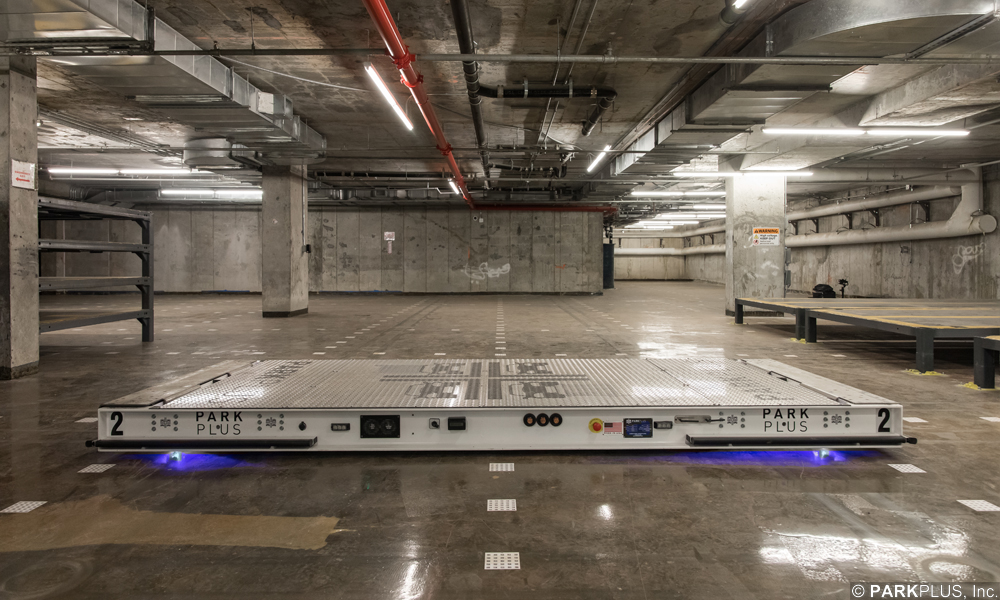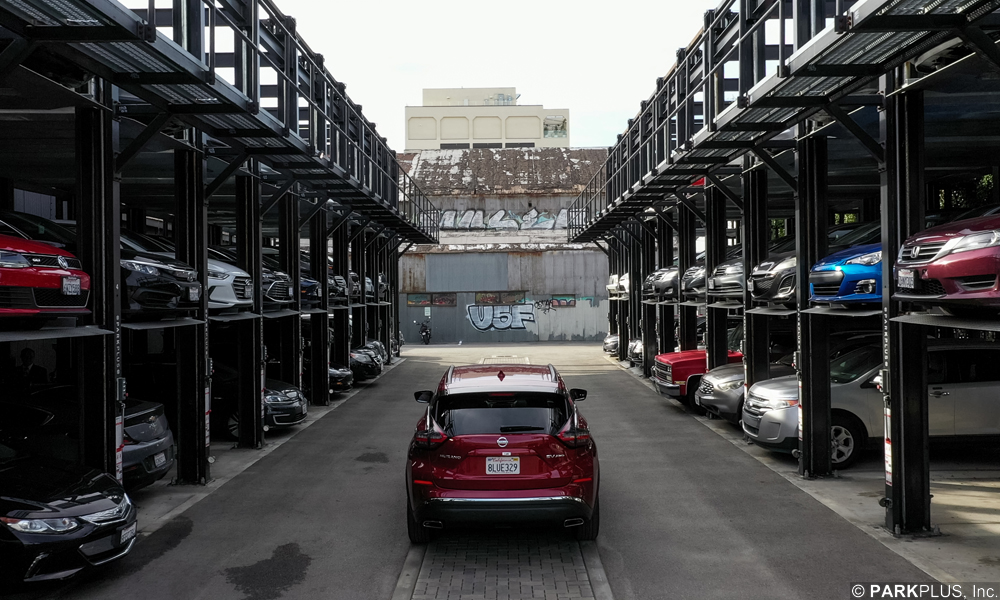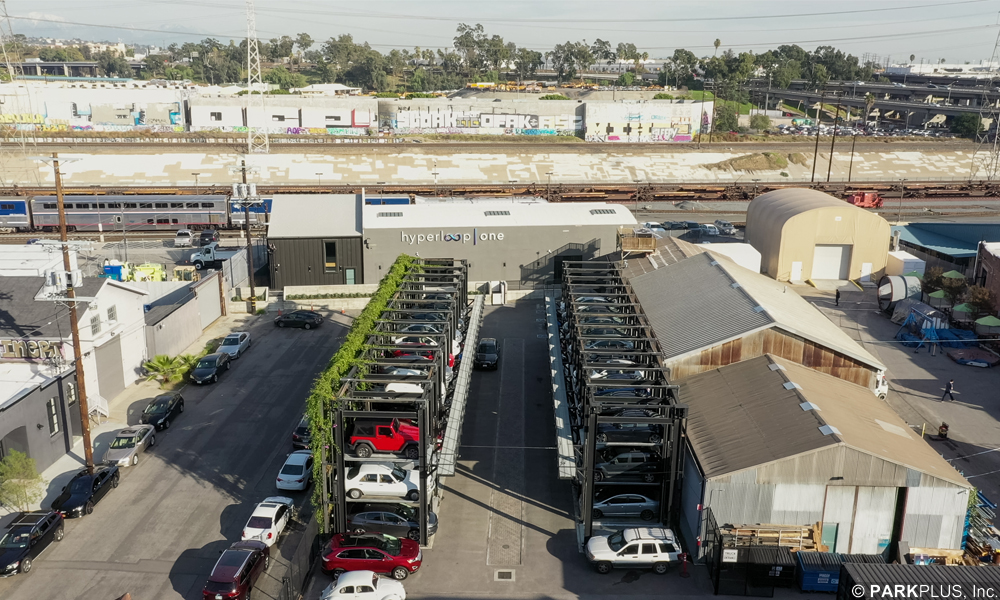High-Density Parking systems provide significant environmental benefits, resulting in a reduced carbon footprint. Automated and Stacked parking systems use less construction materials and incorporate more sustainable resources, complementing the following significant environmentally positive benefits:
Reduced fuel and energy consumption: By minimizing parking search time and vehicle operation, high-density parking systems reduce fuel consumption. Vehicles are turned off during parking and retrieval, reducing emissions up to 80%. Since the vehicles do not run, there is little or no need for typical high energy consumption systems.
- Lighting: One of the largest users of energy, lighting requirements are greatly reduced in a high-density parking system because light is required only in certain areas or for maintenance and can be activated in key areas when necessary.
- Heating and cooling: These are not mandatory, but may be necessary in extreme conditions to keep surfaces from freezing.
- Ventilation: The parking systems have a reduced need for ventilation. Enclosed systems require significantly fewer air changes per hour in comparison to conventional underground or closed parking facilities.
- Equipment: System equipment is electromechanical and consumes energy only during active operation, allowing the system to hibernate or become dormant when not in use.

Reduced air pollution: One of the most significant advantages of high-density parking systems is their ability to reduce air pollution due to decreased vehicle emissions, resulting in better air quality.
Studies show automated parking systems achieve the following:
- Save up to 83% in vehicle fuel emissions when compared with conventional parking facilities (the amount of volatile gasses saved by a 200-vehicle system is equal to removing 92 cars from the road each year or planting 67,000 trees)
- Reduce volatile organic compounds by 68%
- Reduce carbon monoxide by 77%
- Reduce nitrogen oxide by 81%
- Reduce carbon dioxide by 83%
Similar reductions are applicable to all high-density parking systems.

Reduced and recycled construction materials: Automated and Stacked parking systems use structural steel-framed racking, mechanical equipment, and concrete. Many of these construction materials can be up to 90% recycled resources. Stainless steel and concrete can also be regionally sourced, and other materials can be sourced from renewable resources.
Flexible and modular: High-density parking structures and components can be disassembled and erected for reuse. The modular characteristics of these structures enable retrofitting or reuse of structural materials.
Stormwater management: Green infrastructure slows, absorbs, and manages excess water. The reduced size of the systems plays a role in controlling excessive stormwater runoff, which typically accumulates a lot of pollutants in traditional parking lots. Stormwater filtration systems are often integrated into high-density parking systems.

###
This content is part of The American Institute of Architects (AIA) and U.S. Green Building Council (USGBC)-accredited course, Introduction to High-Density Parking Systems. Take the course online or register for/request one of our webinars to learn more and earn continuing education points.



 844-472-7575
844-472-7575
